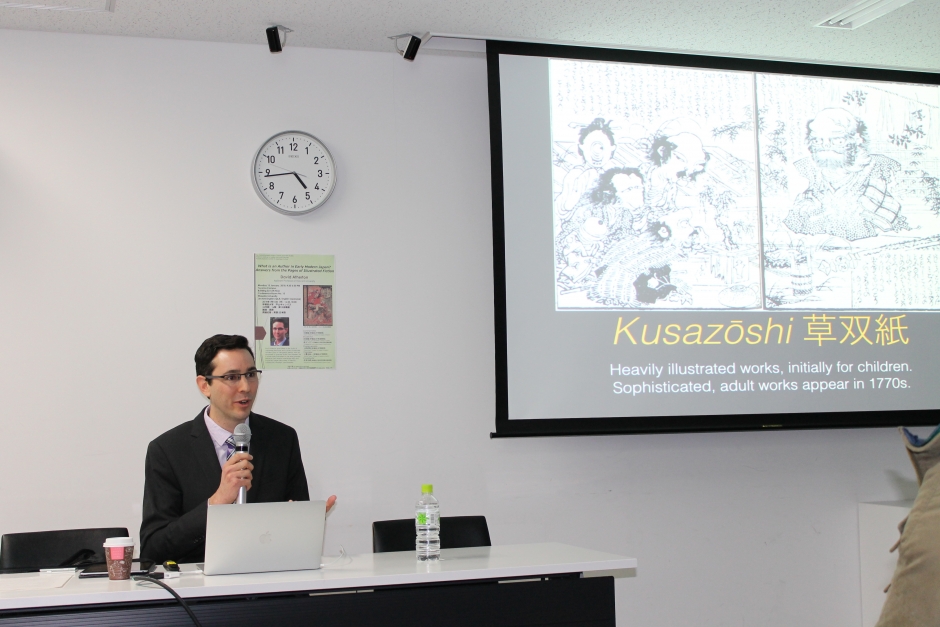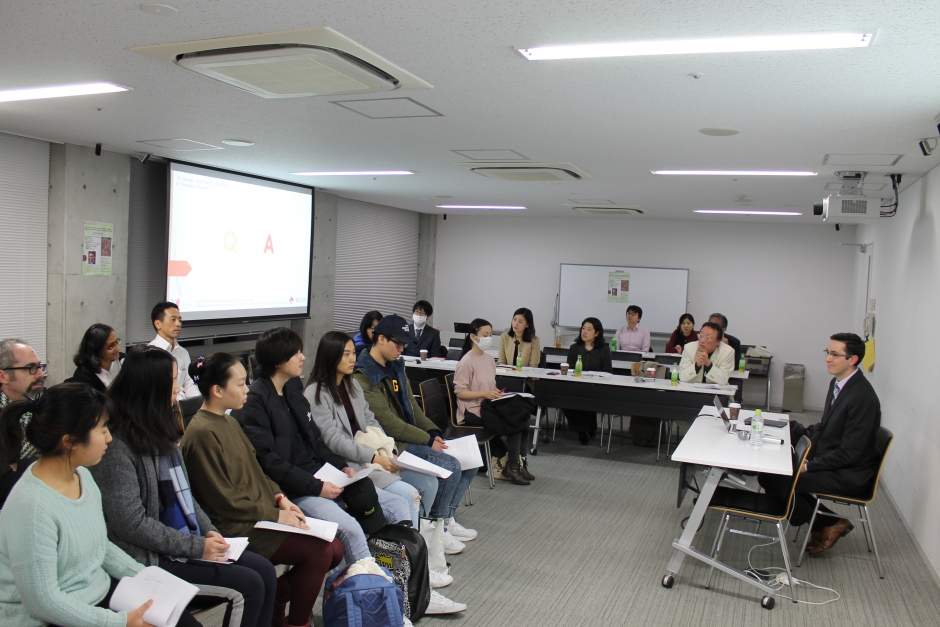“What is an Author in Early Modern Japan?
Answers from the Pages of Illustrated Fiction”
The Lecture by Assistant Professor David Atherton (Harvard University)
-Report-
On January 15, 2018, the Global Japanese Studies Model Unit of Waseda University hosted a lecture by Assistant Professor David Atherton. The subject of his lecture, as indicated by its title, was authors within the context of the woodblock-printed fiction of early modern Japanese literature.
In the woodblock print-illustrated fiction of the latter-half of the 18th century, authors themselves came to appear as characters. This development was related to changes in various circumstances surrounding publishing; changes in the relationship between those involved in publishing and authors resulted in authors appearing in their works as characters.

The lecture mainly discussed three works and considered motifs present in each. First, Dr. Atherton discussed the first woodblock-illustrated text in which the author appeared as a character, Sono Henpō Bakemonobanashi (1776) by Koikawa Harumachi. Second, he spoke about Sakusha Tainai Totsuki no Zu (1804), in which the poet Santo Kyoden was illustrated as the “author who gestated the book,” employing motifs of pregnancy. Third, he examined Shikitei Sanba’s Hara no Uchi Gesaku no Tanehon (1811), in which the apparent motif is of the process of book-making compared to a theatrical performance of ningyō jōruri (a form of play involving puppets and music) by means of metaphor.

Through these works, Dr. Atherton explicated various elements relating to the “author,” including the societal background, the genre of woodblock-illustrated fiction, and the very act of authorship. The lecture thus considered these various works and elements to thoroughly interrogate issues relating to the “author.”
After the lecture proper, there was commentary by Professor Takashi Nakajima (Faculty of Education and Integrated Arts and Science) and a question and answer period. Professor Kazuaki Ueno (Faculty of Letters, Arts and Sciences) then brought the lecture event to a close with a few remarks.


